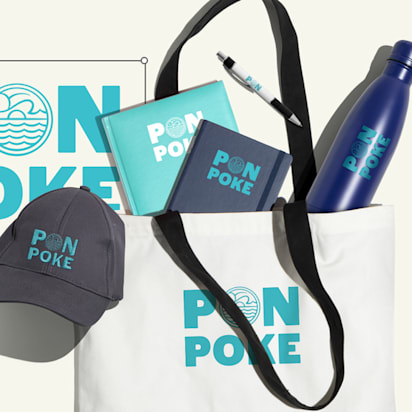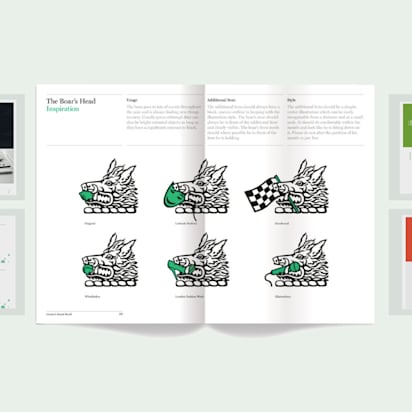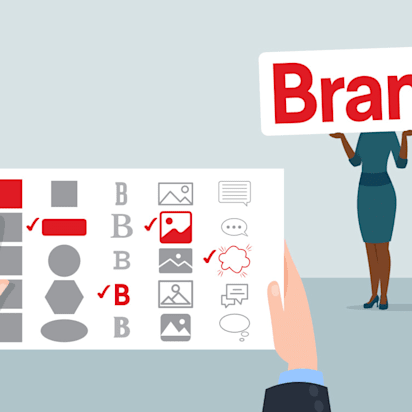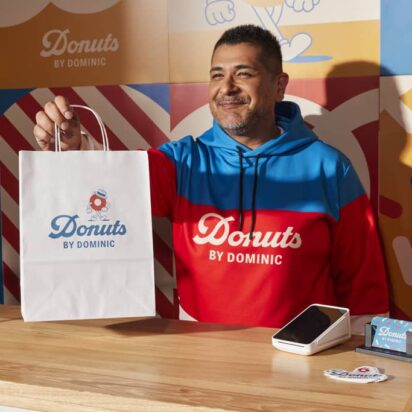A brand style guide keeps your brand from feeling like it changes its personality every time you post, print or promote something. If your Instagram looks playful but your packaging feels stiff, or your menus don’t match your website, that inconsistency can confuse customers and dilute trust. The good news? You don’t need a big agency to fix it. With the right structure, a solid brand style guide template and a clear sense of identity, you can create consistency that feels intentional and recognizable.
In this guide, you’ll learn how to create a brand style guide step by step, with clear explanations and real brand guideline examples from businesses that are doing it well. You’ll see what to include, how to document it and how to actually use the guide so it makes your marketing easier – not harder.
- A brand style guide is a clear reference that shows how your brand looks, sounds and shows up across every channel.
- It’s important because it creates consistency, builds trust and makes your marketing feel cohesive instead of scattered.
- A brand style guide includes logo usage, color palette, typography, tone of voice, imagery style and print-to-digital specifications.
- To build a brand style guide, define your identity, set rules for visual elements, document your tone and translate everything into practical guidelines.
- To bring your brand style guide to life, share it widely, make it easy to access and update it regularly as your business evolves.
What is a brand style guide?
A brand style guide is a reference manual that shows how your brand should look, sound and show up anywhere it appears. It lays out the core elements of your brand identity and explains how to use them correctly.
The guide helps anyone creating something for their business understand what makes the brand feel like their brand.
Whether you’re running a neighborhood bakery, branding a restaurant with a distinct atmosphere or working on perfume branding where subtle visual cues carry meaning, your style guide outlines the essentials – your logo variations, color palette, typefaces, tone of voice and imagery style – and clarifies how these elements work together. It also notes how they should appear across different formats, from packaging to menus to digital ads.
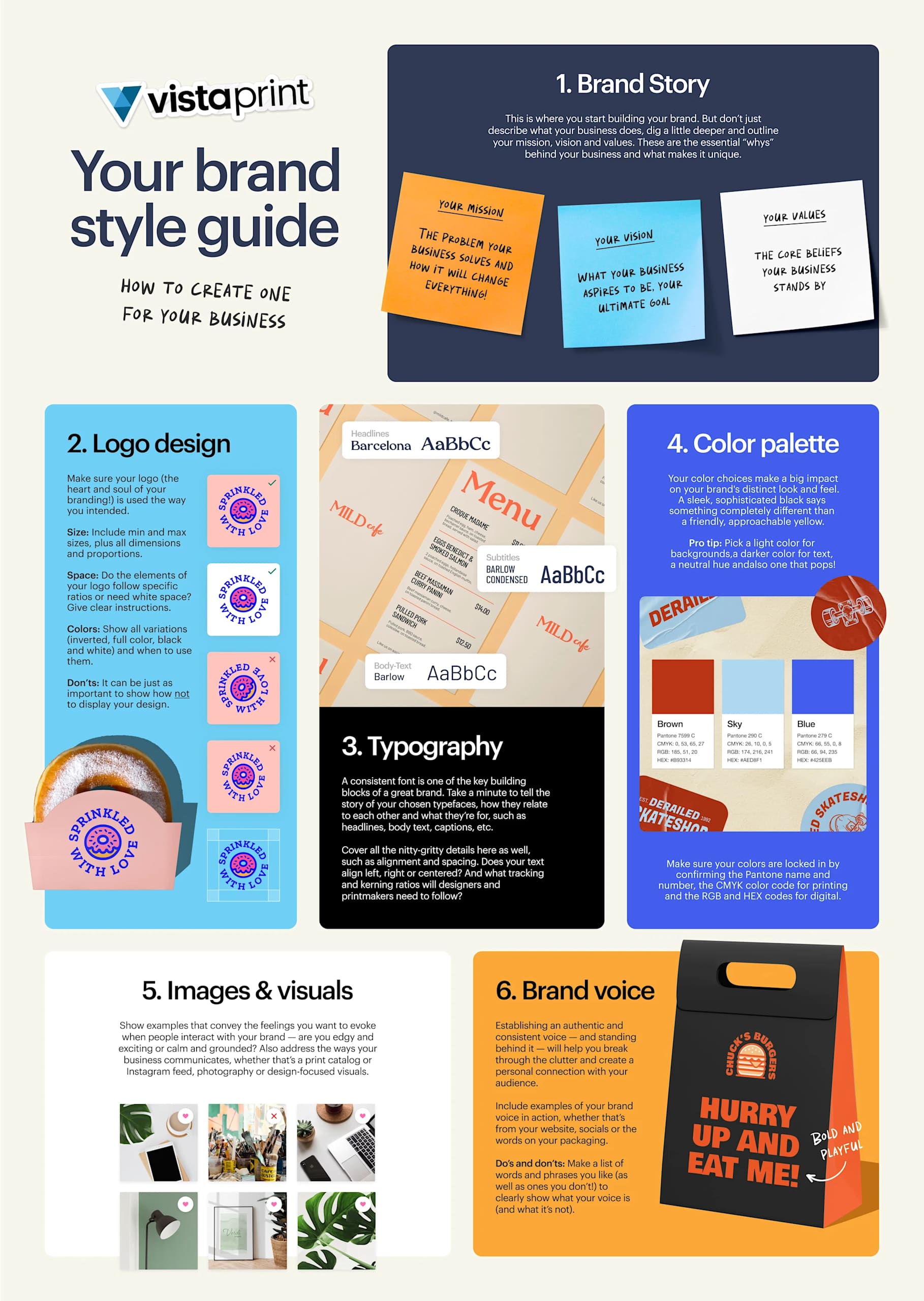
Why your small business needs a brand style guide
As your business grows, more people and more channels get involved in representing your brand. Without a shared reference, your look and messaging can drift. A brand style guide keeps everything aligned so your brand feels steady and recognizable everywhere a customer encounters it.
Here’s how it helps:
- Consistent look and feel across channels: With a brand style guide in place, you ensure your website, packaging, storefront signage and social content all share the same visual identity.
- Clear direction for content creation: Everyone knows which fonts, colors, logo formats and tone to use, reducing confusion and debate.
- Fewer printing and production mistakes: Standardized color codes, file types and layout rules prevent mismatched prints or costly re-runs.
- Easier collaboration with designers and printers: You can hand off one document that answers most of their questions upfront.
- Stronger recognition and recall: Standing out among the competition is one of the top three biggest challenges for small businesses. According to VistaPrint’s 2025 Small Business Guide, presented in partnership with Wix, 62% of consumers report struggling to choose between products and services from similar small businesses. As you adhere to your brand style guidelines, customers start to remember and recognize your brand faster because it shows up consistently.
- Efficient scaling of marketing efforts: According to VistaPrint’s 2025 Small Business Guide, in the following years, 14% of SMBs plan to invest more in traditional marketing, 34% in digital marketing and 33% in a balance of both. As you expand campaigns or product lines, the identity stays unified.
- Messaging that stays aligned over time: Even as team members change, your voice and brand values remain steady.
A clear style guide gives your brand stability. It lets you grow without losing what makes your business recognizable and trustworthy.
Brand guideline examples to inspire you
Plenty of brands have created style guides that are instantly recognizable. Think of companies like Coca-Cola, Nike, Apple or Spotify – you don’t need to see their logo to know you’re looking at their brand. Their colors, typography, imagery and tone are so consistent that the brand carries through even when the logo isn’t visible. That level of clarity comes from well-built brand guidelines.
FRUITLOOTS

FRUITLOOTS uses its style guide to express a personality that’s fun, celebratory and unapologetically itself. The brand voice leads the way: playful lines like “We’re good at giving” appear across postcards, packaging inserts and stickers, reinforcing a confident, generous tone. The visual system – high-contrast black-and-white photography, bold yellow edges and graphic typography – creates an immediate sense of identity.

WildFlora

WildFlora’s brand guidelines lean into calm tonality, organic shapes and soft analog textures that reflect the physical experience of its shop.
- The brand’s plant care cards are both practical and beautifully designed, with illustrated plants, warm descriptions and icons for light and water needs. It’s educational, but written in a voice that feels genuinely helpful rather than clinical.
- Photography and merch extend the same aesthetic. The mugs and printed goods use delicate line drawings and colors drawn from nature, creating continuity between what you buy and the environment where it was created.

Kanda Chocolates
Beyond visuals, Kanda Chocolates uses its brand style guide to communicate values, too! The color palette is warm and inviting, typography feels friendly and handwritten, and packaging explains the Ghana-grown, Ghana-made story clearly and proudly.

Richain
Richain uses a striking palette of neon lime and violet, paired with confident typography and a modular shape system. This system makes everything – from subway posters to social posts to tote bags – feel connected.

Source: Brand style guidelines by Yevhen Genome via 99designs by Vista
Mamahuhu
Mamahuhu’s identity uses friendly illustrations, rounded typography and warm color tones to make Chinese dumplings feel joyful and handmade. The same style appears across menus, packaging, T-shirts and sauce jars.
Want more inspiration? Check out our list of the best brand guideline examples.
What a brand style guide includes (and why it matters)
Looking at strong brand guideline examples makes one thing clear: Consistency isn’t accidental. It’s the result of documenting key visual and verbal choices, then using them every time your brand shows up in the world. A brand style guide organizes those decisions in one place, so your marketing doesn’t have to be reinvented from scratch with each project.
Whether you’re creating a brand style guide template from the ground up or refining what you already have, the following elements form its foundation.
Logo usage
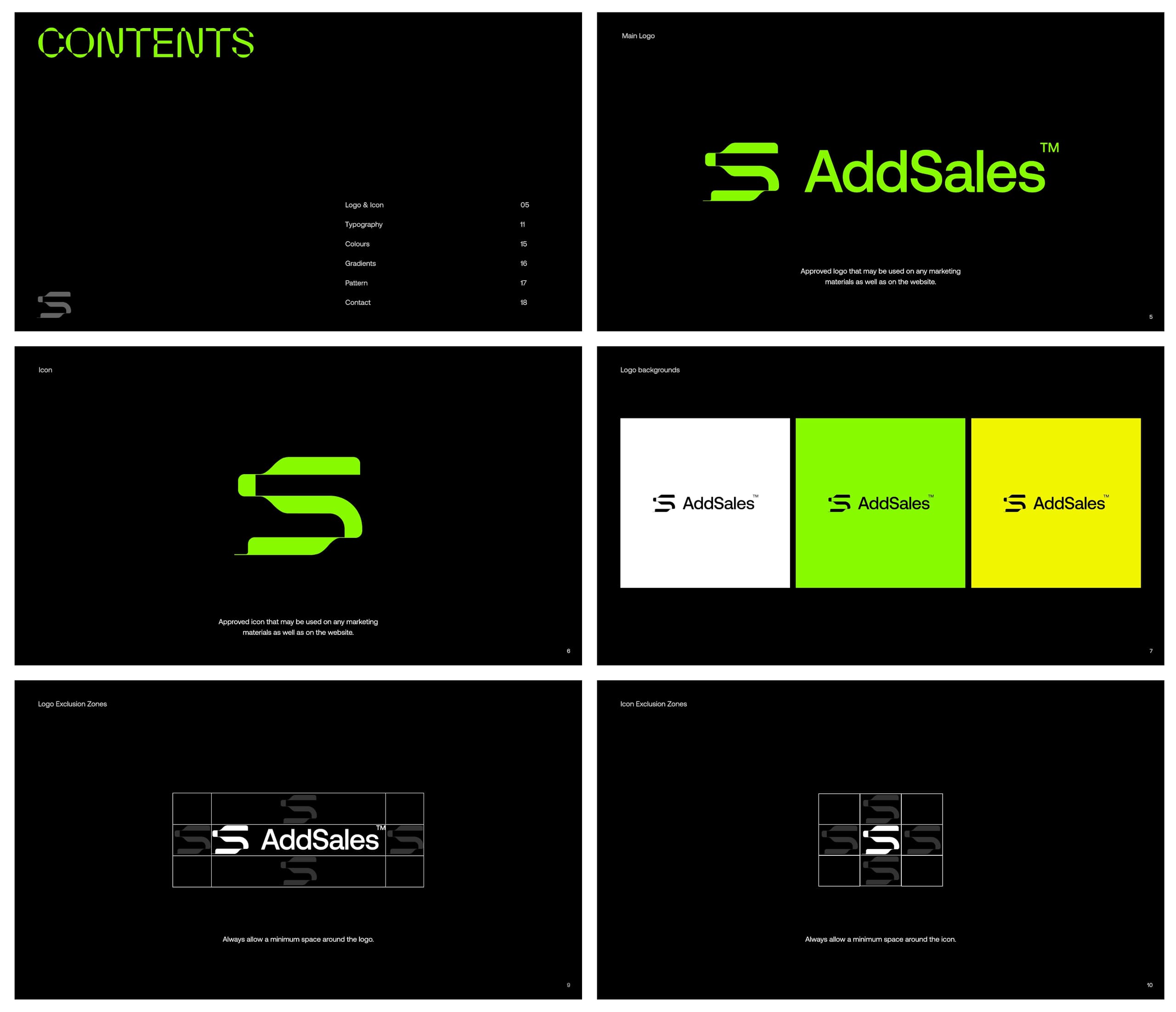
Source: Brand style guide example by Yevhen Genome via 99designs by Vista
Your logo is often the first visual cue people associate with your brand, so it deserves clear direction. This section of your style guide explains how the logo should appear across different backgrounds, how much space surrounds it, which variations are acceptable and which should be avoided.
Keep this part practical. Show the full-color logo, a one-color version and any horizontal or stacked layouts. Include examples of correct usage alongside a few “don’ts” that show what to avoid – stretching the logo, adding drop shadows or changing the colors, for instance.
Color palette

Source: Brand style guide example by Yevhen Genome via 99designs by Vista
Color is one of the fastest ways to trigger recognition. Defining your palette prevents different shades of “almost the same blue” from creeping into your materials.
Include:
- Primary colors
- Secondary or accent colors
- Color codes
To make your palette easier to apply, add a short guideline: which color is great for backgrounds, which is used for calls to action and which supports text or decorative elements.
Do your brand colors feature pink hues? Check out our guide to Barbiecore branding for insights!
Typography

Source: Brand style guide example by Yevhen Genome via 99designs by Vista
Typography shapes how your brand sounds visually. Your style guide should specify which fonts to use for headlines, subheads and body copy, along with basic size and spacing cues.
A helpful approach is to choose a typeface with personality for headings and a simpler, highly readable one for longer text.
Tone of voice
Your tone determines how your brand speaks in writing. Instead of focusing on perfect grammar, this section of the brand style guide template should ensure consistency in personality.
Define:
- Voice traits, e.g., warm, direct, confident, playful
- Words or phrases that fit your brand and add a few examples
- Words to avoid to prevent messaging from drifting into something generic or off-brand
Close this section with short, real-sounding examples – how your brand would write a greeting, a product description or a thank-you message.
Imagery style
Photos and illustrations communicate atmosphere quickly. This section of the brand style guide template should clarify the look and feel that represents your brand. For example: warm and candid vs. crisp and polished, nature-inspired vs. graphic and bold.

Source: Brand style guide example by Yevhen Genome via 99designs by Vista
Print and digital specifications
This is where technical standards live. These details prevent costly mistakes and help designers, printers and partners execute your brand correctly.
Include color values, file types, minimum logo sizes, spacing requirements, recommended image resolutions and bleed settings for print. A small amount of detail here saves time, money and troubleshooting later.
Making sure you include all these elements can feel like you need a long document, but that’s not really the case. A clear two to five-page brand style guide can be incredibly effective if it answers the core questions about how your brand should appear and sound.
The goal is usability, not length. If people can follow it easily, it’s the right size.
How to create a brand style guide step-by-step
Now that you know what belongs in a brand style guide, the next step is putting it together in a way that’s clear, practical and easy for others to follow. Creating one isn’t something you finish in five minutes. It takes a bit of reflection and decision-making – but the payoff is big!
Let’s walk through the process of how to make a brand style guide in a way that’s doable, even if you’re starting from scratch.
1. Define your core brand identity
Before you choose colors or fonts, you need to understand what your brand stands for. This step sets the foundation for every design decision that follows.
Start with:
- Your mission (why you exist)
- Your vision (where you’re heading)
- Your audience (who you’re speaking to)
Then, describe your brand personality in a few concise traits. Think: welcoming, confident, knowledgeable – not long poetic descriptions. These traits will later guide your tone of voice and imagery choices.
2. Set logo rules and usage guidelines
Once your identity is clear, define how your logo should appear across different applications. Specify which versions are approved – full color, monochrome, icon-only – and where each one works best.
Add minimum size rules so the logo doesn’t become unreadable, and give spacing guidelines to prevent it from being crowded by other elements.

Source: Brand style guide by Yevhen Genome via 99designs by Vista
If you sell packaging, signage or merch, this part becomes especially important. Clean, consistent logo use builds familiarity, while inconsistent visuals can make your brand feel unreliable or unprofessional, weakening customer trust.
3. Define your brand color palette
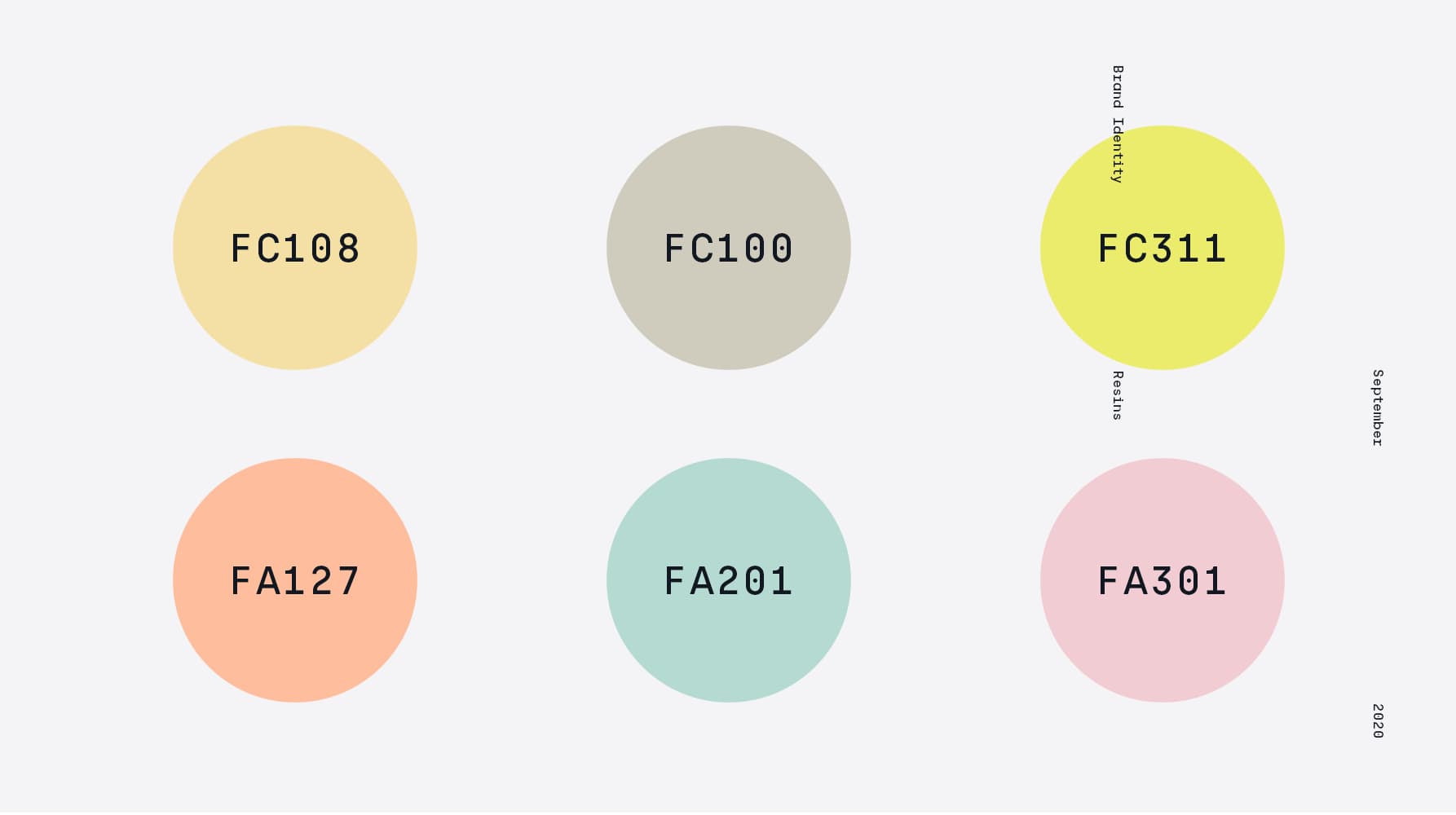
Source: Brand style guide example by goopanic via 99designs by Vista
Your color palette supports recognition and mood. Organize your palette into primary colors (used most often) and secondary or accent colors (used for highlights, backgrounds or decorative elements). Record each color in multiple formats:
- HEX for web use
- RGB for digital screens
- CMYK and Pantone for print production
This prevents slight color shifts that can make your brand look different from platform to platform.
RGB is used for digital displays. CMYK is used for printing. They don’t display color the same way, so documenting both is essential.
4. Choose your brand fonts and typography
Typography influences how your brand’s personality is perceived before someone reads a word. Choose one typeface for headings and another for body text to keep things balanced and readable. Then set basic rules:
- Which font is used where
- Typical sizes for web or print
- Line spacing and paragraph spacing
- Whether text should be left-aligned, centered or justified
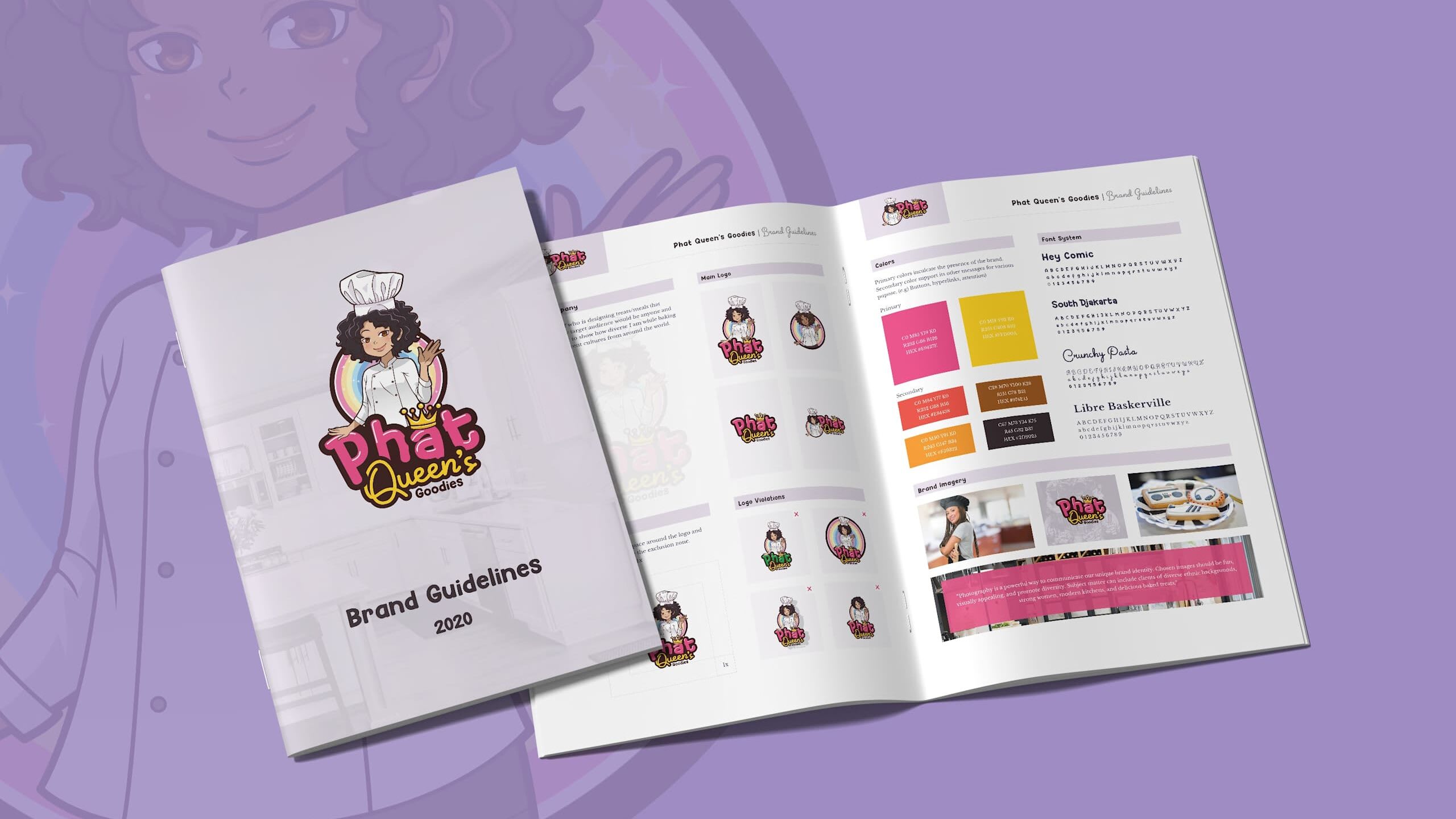
Source: Brand style guide example by Terry Bogard via 99designs by Vista
As you document these rules, think about accessibility. Fonts that are too thin, too tight or too stylized can be difficult to read, especially for users with visual or cognitive differences. Aim for clear contrast between text and background, ensure body copy is comfortable to read at smaller sizes and consider how your typography performs on screens of various sizes.
5. Establish image and graphic style
Your imagery choices – photos, illustrations, icons – should support the personality you defined earlier. Decide whether your brand leans toward candid lifestyle shots, product-focused close-ups, studio photography or warm, natural environments.
If you use illustrations or icons, define style rules such as line thickness, color fill or level of detail. Small, consistent choices like these keep your visuals feeling unified across ads, social graphics, packaging and your website.

Source: Image and graphic style part of a brand style guide by goopanic via 99designs by Vista
For example, a café that uses soft daylight photography online should use similar lighting cues on printed menus, signage and promotional materials to keep the atmosphere consistent.
6. Craft a clear tone of voice guide
Your tone of voice determines how your brand speaks to customers. Start by listing a few key voice traits – such as friendly, direct or enthusiastic.
Then provide examples of how those traits translate into real writing. You might include:
- A before/after version of a product description
- Sample social media captions
- A short greeting message or email opener
Adding a brief list of words you’d avoid can be surprisingly helpful as it keeps messaging from drifting into something that doesn’t feel like your brand.
7. Translate digital guidelines into print-ready specs
The final step is making sure your style guide works beyond screens. Colors that look great digitally can print differently without the right preparation, so include CMYK and Pantone equivalents for your palette.
Also note which file types should be used where:
- PNG or SVG → icons and digital logos
- JPG → photography
- PDF or EPS → print-ready artwork
If you print materials like packaging, posters or business cards, document bleed settings, safe margins and recommended image resolution (usually 300 DPI for print).
Brand style guide template
A professionally developed brand style guide can range anywhere from $800–$6,000+, depending on scope, research and deliverables. But here’s the key takeaway for small businesses: You don’t need a large budget to build an effective one. With a clear identity and a structured approach, a DIY guide works extremely well.
To make that upfront identity work easier, we’ve created a free Brand Identity Worksheet you can fill out before formalising your style guide. It walks you through defining your brand, audience, values, personality, voice and visual direction, so you’re not starting from a blank page. Once completed, it becomes the foundation you’ll use to document your logo rules, color palette, typography and layout guidelines.
Final checklist before you hit “Save”
Brand overview is complete and concise:
- Includes a one to two-sentence description of what your brand does
- List three to five personality traits that accurately reflect your identity
- Name your primary audience clearly and specifically
Logo usage rules are fully documented:
- All approved logo variations are included (full color, one-color, icon-only)
- Minimum size and required clear space are stated with visual examples
- Correct vs. incorrect logo usage is illustrated clearly
Color palette is fully defined for digital and print:
- Primary and secondary colors include HEX, RGB, CMYK and Pantone codes
- Notes clarify when each color should be used (backgrounds, accents, CTAs, text)
Typography guidelines set a complete hierarchy:
- Heading and body typefaces are named with clear usage rules
- Recommended sizes and spacing are listed for both web and print
- Accessibility basics are addressed (contrast levels, minimum readable sizes)
Tone of voice guidance is actionable:
- Core tone descriptors are listed (e.g., warm, direct, confident)
- Three short writing examples show the tone in practice
- A short “avoid” list keeps messaging from drifting off-brand
Imagery and graphic style direction are unambiguous:
- Photography guidelines specify lighting, subject matter and framing preferences
- Illustration/icon rules define line weight, color usage and style
- A small set of reference images shows the desired visual atmosphere
Print and digital specs prevent execution issues:
- Color conversions for print (CMYK/Pantone) match your digital colors (RGB/HEX)
- File format rules are included (PNG/SVG for digital; PDF/EPS for print)
- Minimum image resolution for print (300 DPI) is clearly stated
- Bleed, trim and safe margin guidelines are listed for all printed materials
Technical accuracy is verified:
- You’ve run a quick print test to confirm color accuracy vs. screen display
- All file types, specs and measurements have been checked for consistency
The document is version-controlled:
- Includes a version number and “last updated” date for future maintenance
Keeping your brand style guide alive
Creating your brand style guide is a major step (but it only works if people actually use it). Think of it as an everyday reference, not a one-time project to tuck away. The more your team relies on it, the more recognizable and cohesive your brand becomes.
Start by sharing the guide widely. Give access to new hires, part-time staff, freelancers, designers, printers and anyone else who creates materials for your business. Next, make it easy to find. Store it somewhere central and intuitive – Google Drive, Notion, Dropbox, a shared server – anywhere that doesn’t require hunting for the latest version. Finally, plan to update it periodically. Your brand will evolve as your audience shifts, your offerings expand or you refine your tone. Set a reminder to review the guide every few months and update visuals, tone examples or usage rules as needed.
Ready to create an effective brand style guide?
A strong brand style guide brings clarity to your marketing and consistency to every place your business shows up. It helps you define how your brand looks, how it speaks and how it feels, so that no matter who’s creating your materials, your identity stays aligned. The effort you put into documenting your colors, typography, tone and visual style pays off in recognition, trust and a more cohesive experience for your customers.
To make applying your brand easier, VistaPrint offers a Brand Kit where you can save your business name, supporting text, industry, logo, color palette and fonts. Once your kit is set up, you can automatically apply your branding across business cards, signage, apparel, packaging and more. It keeps your materials consistent without extra effort.













